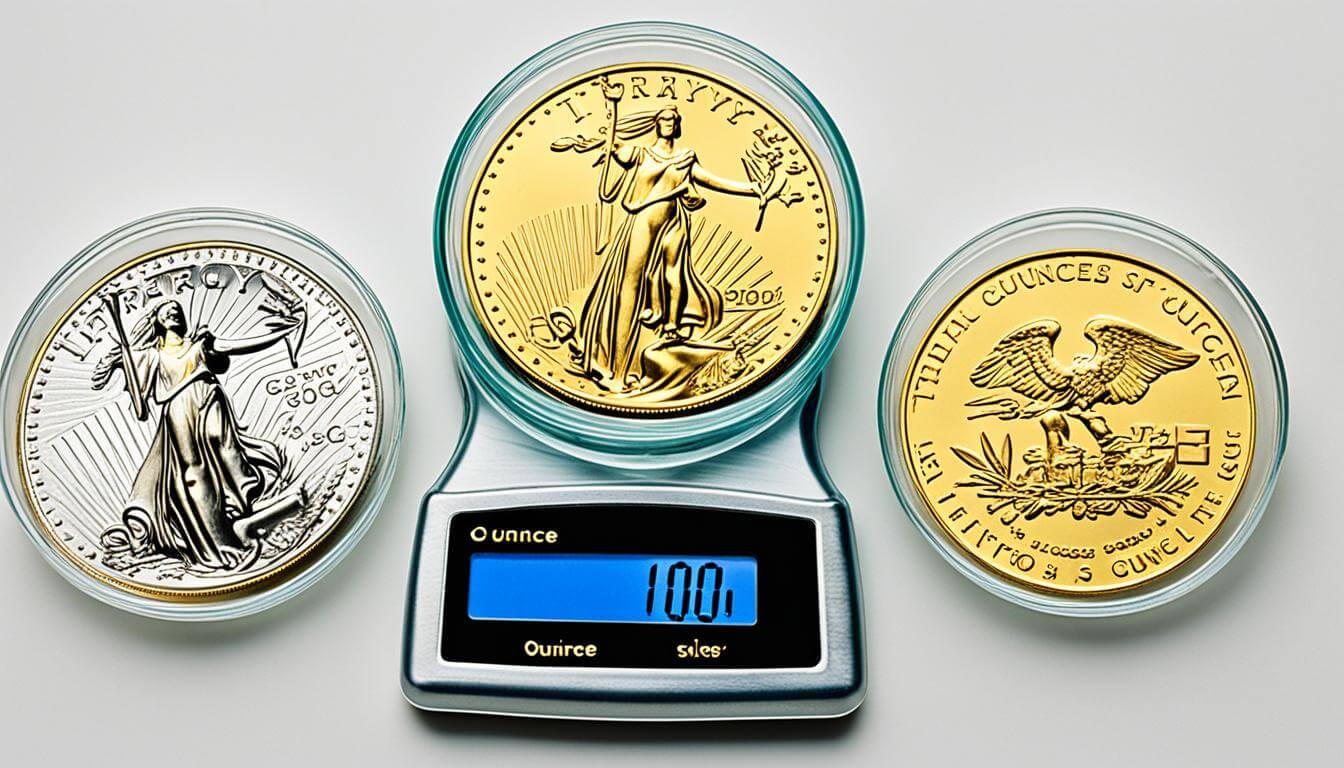Gold Conversion: Ounces In A Pound Explained

In the world of gold trading and investment, accurate measurements and conversions play a pivotal role in making informed decisions. One specific conversion that is crucial to understand is the conversion of ounces in a pound. To navigate the intricacies of the gold market, it is essential to grasp the concept of the troy ounce, the standard unit of measurement for precious metals like gold, silver, and platinum.
A troy ounce is not the same as a standard ounce used for everyday purposes. While a standard ounce weighs approximately 28.35 grams, a troy ounce is slightly heavier, weighing 31.1034768 grams. This disparity in weight can have significant implications when it comes to accurate trading and investment decisions.
Knowing how many ounces are in a pound is crucial for accurate conversions in the gold industry. In the troy weight system, 12 troy ounces make up a troy pound, which is lighter than a standard pound. Understanding this distinction is vital to avoid miscalculations and ensure precise measurements.
Investing in gold and other precious metals requires a comprehensive understanding of the troy ounce and its significance in the pricing and valuation of these commodities. By familiarizing yourself with this unit of measurement, you can make informed investment decisions, capitalize on market opportunities, and navigate the complexities of the gold industry with confidence.
What Is A Troy Ounce?
A troy ounce is a metric used for weighing precious metals and gemstones. It is equivalent to 31.1034768 grams and is commonly used to determine the value of precious metals in the market. The troy ounce originated in Troyes, France, and dates back to the Middle Ages. It is still used today to ensure purity standards in the precious metals industry.
Troy Ounce: The Standard For Weighing Precious Metals
The troy ounce is the preferred unit of measurement when it comes to weighing precious metals such as gold, silver, and platinum. Its historical significance can be traced back to the medieval city of Troyes in France, where accurate measurements were crucial in determining the value and purity of these valuable commodities.
Today, the troy ounce continues to be widely recognized and used by traders, investors, and industry professionals to ensure consistency and transparency in the precious metals market.
Purity Standards In The Precious Metals Industry
One of the key reasons why the troy ounce is still used today is its association with purity standards in the precious metals industry. Precious metals are often alloyed with other metals, and the troy ounce helps determine the precise amount of pure metal content in a given product.
Whether it’s gold bullion, silver coins, or platinum jewelry, the troy ounce allows for accurate measurements and ensures that consumers and investors know the purity of the precious metal they are purchasing.
Understanding The Troy Ounce
When it comes to pricing metals like gold, platinum, and silver, the troy ounce plays a crucial role. The pricing of these precious metals is often listed per-ounce, and it’s important to understand that it refers to the troy ounce.
The troy ounce, which is equivalent to 31.1034768 grams, was historically used to weigh not only metals but also certain gemstones. While the carat system has largely replaced the troy weight system for gemstones, it remains a standard unit of measurement for precious metals.
Considering the significance of the troy ounce in the pricing and trading of metals, it’s essential for investors and traders to be familiar with this unit of measurement. By understanding the troy ounce, individuals can make informed decisions when it comes to investing in gold, platinum, silver, and other valuable metals.

Troy Ounce Vs. Ounce
In the world of measurements, ounces play a significant role. However, not all ounces are created equal. Two common types of ounces are the avoirdupois ounce, also known as the standard ounce, and the troy ounce. Understanding the difference between these two units of measure is essential for accurate measurements and conversions.
The avoirdupois ounce is the most commonly used ounce for measuring items in the United States, except for precious metals and gems. It is slightly lighter than the troy ounce, with a gram equivalent of 28.35. This ounce is employed in everyday applications, such as weighing food, parcels, and other general items.
On the other hand, the troy ounce is primarily used within the precious metals and gemstone industries. Twelve troy ounces make up a troy pound, which is lighter than a standard pound consisting of 16 avoirdupois ounces. This distinction reflects the historical usage of different measurement systems for different purposes.
To better comprehend the conversion between avoirdupois and troy ounces, it’s important to note that one troy ounce equals approximately 1.097 avoirdupois ounces. Consequently, when converting between the two, one must consider the weight difference.
By understanding the variance between the troy ounce and the standard ounce, one can ensure accurate measurements and conversions in various contexts. From determining the value of precious metals to weighing gemstones, having a clear understanding of these units of measure is crucial in the fields of trading, investing, and commerce.
To visualize the difference between the avoirdupois ounce and the troy ounce, refer to the image below:

Conclusion
The troy weight system, with the troy ounce as its unit of measurement, is still widely used for weighing precious metals and gemstones. This system is essential in the precious metals industry, as it ensures accurate measurements and pricing. Whether you are a seasoned investor or a novice looking to diversify your portfolio, understanding the troy weight system is crucial.
Investing in precious metals offers a tangible asset that can provide stability and potential growth over time. There are various avenues to invest in precious metals, including commodity exchange-traded funds (ETFs), common stock shares of metals and mining companies, futures and options markets, and even gold certificates. By exploring these options, you can find the investment strategy that aligns with your financial goals.
Knowledge of the conversion rates and differences between the troy ounce and the standard ounce is fundamental in the precious metals industry. These variations impact the accurate measurement and valuation of precious metals. Therefore, it is important to stay informed and updated on the latest market trends and conversion factors to make informed investment decisions.
FAQ
What Is A Troy Ounce?
A troy ounce is a unit of measure used for weighing precious metals, such as gold, silver, and platinum. It is equivalent to 31.1034768 grams and is the standard unit of measurement in the precious metals market.
Why Is Understanding The Troy Ounce Important?
Understanding the troy ounce is important for accurate trading and investment decisions in the gold industry. It is used to price metals like gold, platinum, and silver, and prices of precious metals listed per ounce generally refer to the troy ounce.
How Does The Troy Ounce Differ From The Standard Ounce?
The troy ounce is not the same as the standard ounce, also known as the avoirdupois ounce. While the standard ounce is commonly used for measuring items in the US, the troy ounce is specifically used for weighing precious metals and gems. One troy ounce is equal to 31.1034768 grams, while a standard ounce is 28.35 grams.
What Is The Troy Weight System?
The troy weight system is a system of measurement that uses the troy ounce as its unit of measure. It originated in Troyes, France, during the Middle Ages and is still widely used today for weighing precious metals and gemstones. In the troy weight system, 12 troy ounces make up a troy pound, which is lighter than a standard pound.
How Can I Invest In Precious Metals?
There are several ways to invest in precious metals, including commodity exchange-traded funds (ETFs), common stock shares of metals and mining companies, futures and options markets, and even gold certificates. Understanding the conversion rates and differences between the troy ounce and the standard ounce is crucial for making informed investment decisions in the precious metals industry.




